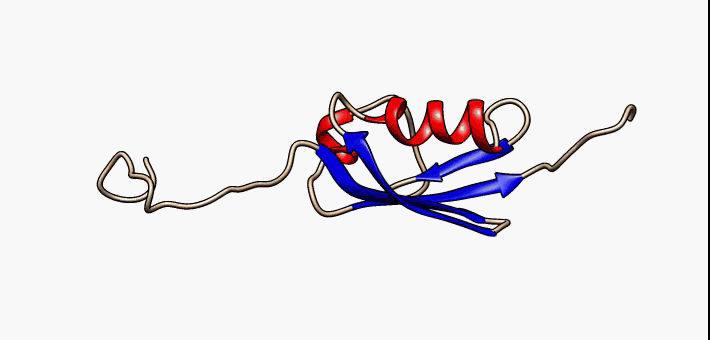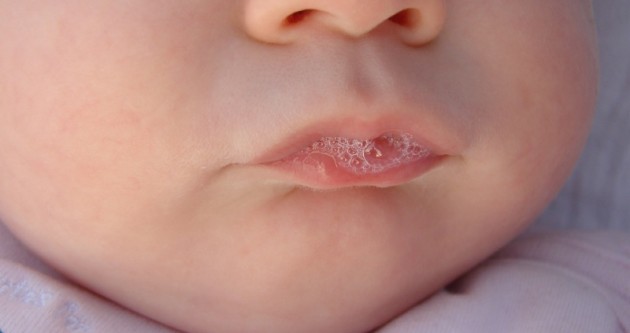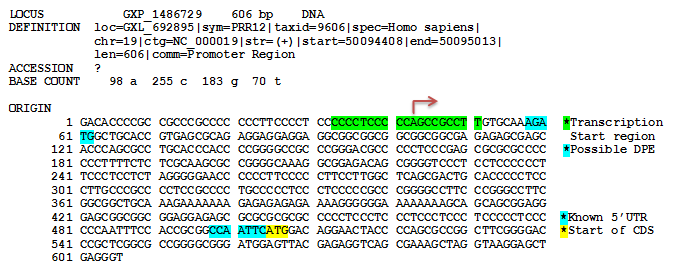|
Proline Rich Protein
Proline-rich proteins (PRPs) are a class of intrinsically disordered proteins (IDPs) containing several repeats of a short proline-rich sequence. Many tannin-consuming animals secrete a tannin-binding protein (mucin) in their saliva. Tannin-binding capacity of salivary mucin is directly related to its proline content. Advantages in using salivary proline-rich proteins (PRPs) to inactivate tannins are : * PRPs inactivate tannins to a greater extent than do dietary proteins; this results in reduced fecal nitrogen losses, * PRPs contain non specific nitrogen and nonessential amino acids; this makes them more convenient for an animal to exploit rather than using up valuable dietary protein. Example of this class of protein is IB5, a human parotid salivary protein known to bind with polyphenols (binding responsible for the astringency mouth feel). Other examples include Proline-Rich 12 Proline-rich 12 (PRR12) is a protein of unknown function encoded by the gene ''PRR12''. Gene ... [...More Info...] [...Related Items...] OR: [Wikipedia] [Google] [Baidu] |
Intrinsically Disordered Proteins
In molecular biology, an intrinsically disordered protein (IDP) is a protein that lacks a fixed or ordered protein tertiary structure, three-dimensional structure, typically in the absence of its macromolecular interaction partners, such as other proteins or RNA. IDPs range from fully unstructured to partially structured and include random coil, molten globule-like Protein aggregation, aggregates, or flexible linkers in large multi-Protein domain, domain proteins. They are sometimes considered as a separate class of proteins along with globular protein, globular, fibrous protein, fibrous and membrane proteins. IDPs are a very large and functionally important class of proteins. They are most numerous in Eukaryote, eukaryotes, with an estimated 30-40% of residues in the eukaryotic proteome located in disordered regions. Disorder is present in around 70% of proteins, either in the form of disordered tails or flexible linkers. Proteins can also be entirely disordered and lack a define ... [...More Info...] [...Related Items...] OR: [Wikipedia] [Google] [Baidu] |
Proline
Proline (symbol Pro or P) is an organic acid classed as a proteinogenic amino acid (used in the biosynthesis of proteins), although it does not contain the amino group but is rather a secondary amine. The secondary amine nitrogen is in the protonated form (NH2+) under biological conditions, while the carboxyl group is in the deprotonated −COO− form. The "side chain" from the α carbon connects to the nitrogen forming a pyrrolidine loop, classifying it as a aliphatic amino acid. It is non-essential in humans, meaning the body can synthesize it from the non-essential amino acid L-glutamate. It is encoded by all the codons starting with CC (CCU, CCC, CCA, and CCG). Proline is the only proteinogenic amino acid which is a secondary amine, as the nitrogen atom is attached both to the α-carbon and to a chain of three carbons that together form a five-membered ring. History and etymology Proline was first isolated in 1900 by Richard Willstätter who obtained the amino a ... [...More Info...] [...Related Items...] OR: [Wikipedia] [Google] [Baidu] |
Tannin
Tannins (or tannoids) are a class of astringent, polyphenolic biomolecules that bind to and Precipitation (chemistry), precipitate proteins and various other organic compounds including amino acids and alkaloids. The term ''tannin'' is widely applied to any large polyphenolic compound containing sufficient hydroxyls and other suitable groups (such as carboxyls) to form strong complexes with various macromolecules. The term ''tannin'' (from scientific French ''tannin'', from French ''tan'' "crushed oak bark", ''tanner'' "to tan", cognate with English language, English ''tanning'', Medieval Latin ''tannare'', from Proto-Celtic ''*tannos'' "oak") refers to the abundance of these compounds in oak Bark (botany), bark, which was used in Tanning (leather), tanning animal Hide (skin), hides into leather. The tannin compounds are widely distributed in many species of plants, where they play a role in protection from predation (acting as pesticides) and might help in regulating plant ... [...More Info...] [...Related Items...] OR: [Wikipedia] [Google] [Baidu] |
Mucin
Mucins () are a family of high molecular weight, heavily glycosylated proteins ( glycoconjugates) produced by epithelial tissues in most animals. Mucins' key characteristic is their ability to form gels; therefore they are a key component in most gel-like secretions, serving functions from lubrication to cell signalling to forming chemical barriers. They often take an inhibitory role. Some mucins are associated with controlling mineralization, including nacre formation in mollusks, calcification in echinoderms and bone formation in vertebrates. They bind to pathogens as part of the immune system. Overexpression of the mucin proteins, especially MUC1, is associated with many types of cancer. Although some mucins are membrane-bound due to the presence of a hydrophobic membrane-spanning domain that favors retention in the plasma membrane, most mucins are secreted as principal components of mucus by mucous membranes or are secreted to become a component of saliva. Gene ... [...More Info...] [...Related Items...] OR: [Wikipedia] [Google] [Baidu] |
Saliva
Saliva (commonly referred as spit or drool) is an extracellular fluid produced and secreted by salivary glands in the mouth. In humans, saliva is around 99% water, plus electrolytes, mucus, white blood cells, epithelial cells (from which DNA can be extracted), enzymes (such as lingual lipase and amylase), and antimicrobial agents (such as secretory IgA, and lysozymes). The enzymes found in saliva are essential in beginning the process of digestion of dietary starches and fats. These enzymes also play a role in breaking down food particles entrapped within dental crevices, thus protecting teeth from bacterial decay. Saliva also performs a lubricating function, wetting food and permitting the initiation of swallowing, and protecting the oral mucosa from drying out. Saliva has specialized purposes for a variety of animal species beyond predigestion. Certain swifts construct nests with their sticky saliva. The foundation of bird's nest soup is an aerodramus nest. Venom ... [...More Info...] [...Related Items...] OR: [Wikipedia] [Google] [Baidu] |
Protein IB5
Basic salivary proline-rich protein 4 is a protein that in humans is encoded by the ''PRB4'' gene. The protein encoded by this gene is a proline-rich salivary protein. This gene and five other genes that also encode salivary proline-rich proteins (PRPs), as well as a gene encoding a lacrimal gland PRP, form a PRP gene cluster in the chromosomal 12p13 region. PRB4 is post-translationally cleaved into three different mature peptides Peptides are short chains of amino acids linked by peptide bonds. A polypeptide is a longer, continuous, unbranched peptide chain. Polypeptides that have a molecular mass of 10,000 Dalton (unit), Da or more are called proteins. Chains of fewer t ...: *Protein N1 *Glycosylated protein A *Peptide P-D (also known as proline-rich peptide IB-5) References Further reading * * * * * * * * * * * * * * Precursor proteins Salivary proline-rich proteins {{protein-stub ... [...More Info...] [...Related Items...] OR: [Wikipedia] [Google] [Baidu] |
Astringency
An astringent (sometimes called adstringent) is a chemical that shrinks or constricts body tissues. The word derives from the Latin '' adstringere'', which means "to bind fast". Astringency, the dry, puckering or numbing mouthfeel caused by the tannins in unripe fruits, lets the fruit mature by deterring eating. Tannins, being a kind of polyphenol, bind salivary proteins and make them precipitate and aggregate, producing a rough, "sandpapery", or dry sensation in the mouth. Smoking tobacco is also reported to have an astringent effect. In a scientific study, astringency was still detectable by subjects who had local anesthesia applied to their taste nerves, but not when both these and the trigeminal nerves were disabled. Uses In medicine, astringents cause constriction or contraction of mucous membranes and exposed tissues and are often used internally to reduce discharge of blood serum and mucous secretions. This can happen with a sore throat, hemorrhages, diarrhea, and p ... [...More Info...] [...Related Items...] OR: [Wikipedia] [Google] [Baidu] |
Proline-rich 12
Proline-rich 12 (PRR12) is a protein of unknown function encoded by the gene ''PRR12''. Gene The ''Homo sapiens'' ''PRR12'' gene is 34,785 base pairs long, contains 14 exons, and is located on chromosome 19 at 19q13.33. Known aliases for PRR12 include "proline rich 12" and KIAA1205. Within its gene neighborhood, ''PRR12'' is flanked by ''PRRG2'' and ''SCAF1'' on the sense strand and ''RRAS'' and ''NOSIP'' on the antisense strand. Nitric oxide synthase interacting protein, NOSIP, regulates the activity and localization of nitric oxide synthase (endothelial and neuronal), controlling nitric oxide production. Proline rich Gla, PRRG2, has a Gla domain which binds hyaluronan and is associated with proteins present in the ''extracellular matrix'' involved with cell adhesion and cell migration. Ras-related protein R-Ras, RRAS, belongs to the Ras family and is involved in the organization of actin filaments within the cytoskeleton. SR-Related CTD-Associated Factor 1, SCAF1, is tho ... [...More Info...] [...Related Items...] OR: [Wikipedia] [Google] [Baidu] |
Proline-rich Protein 21
Proline-rich protein 21 (PRR21) is a protein of the family of proline-rich proteins. It is encoded by the PRR21 gene, which is found on human chromosome 2, band 2q37.3. The gene exists in several species, both vertebrates and invertebrates, including humans. However, the protein have few conserved regions among species. Structure PRR21 consists of 389 amino acids or 1170 base pairs, all found within one exon. Like other proline-rich proteins, it contains a repeated sequence of amino acids that contains several proline amino acid, residues. The tandemly repeated sequence of PRR21 is 28 amino acids long and is repeated in full 11 times, with few variations. A logo displaying the variances of the repeat is shown below. The repeat constitute almost the entire protein, except for the very beginning and a short tail. Polymorphism Many single-nucleotide polymorphisms (SNPs) are predicted for the gene, and several of these cause missense mutations. This allows for personal variances ... [...More Info...] [...Related Items...] OR: [Wikipedia] [Google] [Baidu] |





